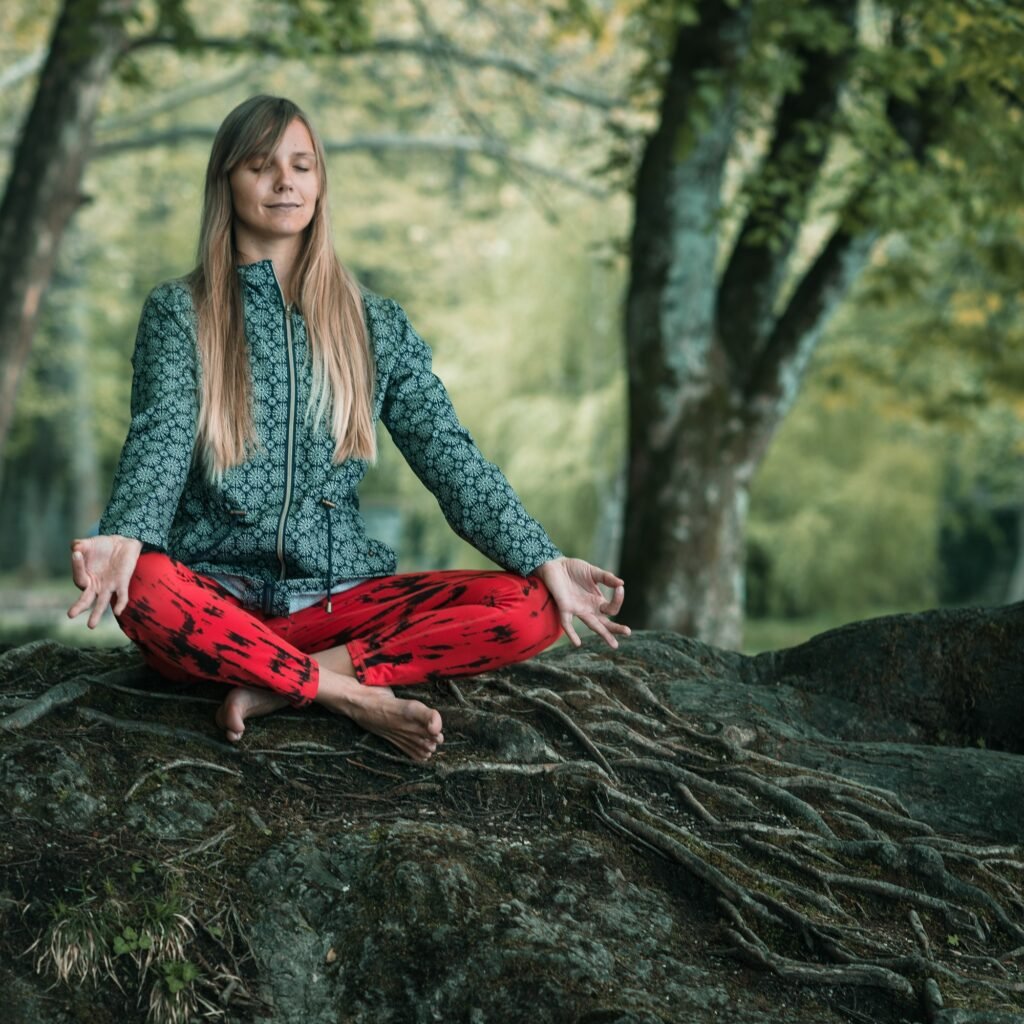Have you ever wondered why ancient spiritual practices often begin with the simple act of breathing? Deep within the mystical traditions of yoga lies a fascinating connection between our breath and Kundalini
Like a master key that unlocks hidden chambers of consciousness, breathwork serves as the bridge between our physical reality and spiritual awakening. This ancient wisdom, combining the power of breath with Kundalini energy, has been transforming lives for thousands of years, offering a path to profound personal growth and spiritual enlightenment for people

What is Kundalini?
Kundalini spiritual energy – a sacred concept from Hindu tradition that represents our hidden spiritual potential. Known as Shakti in ancient Sanskrit texts, this energy has been part of spiritual practices since the Upanishads (9th-7th centuries BCE).
When this energy stirs, it can bring amazing shifts in how you see the world and connect with the divine. But heads up – it’s not always smooth sailing. You might feel intense physical sensations or emotional waves as this energy moves through you.
Introduction to Breathwork
At its heart, breathwork is about taking control of your breathing patterns. It’s more than just inhaling and exhaling.
Think of breathwork as your toolkit for inner balance. You might start with deep belly breaths, move on to alternate nostril breathing, or try quick breath patterns. Each technique serves a purpose, whether you want to calm your thoughts, feel more present, or simply tune into your body’s natural rhythm.
Through mindful breathing, you’ll notice more about how your body feels, find relief from stress, and stay grounded in the present moment.
How Kundalini and Breathwork Intersect
Breathing techniques are key to waking up your Kundalini energy. When you practice pranayama (yogic breathing), you create the perfect conditions for this spiritual force to flow upward through your chakras.
Many people who combine Kundalini Yoga practice with their breathwork say their experiences become more intense and meaningful. The breath helps smooth out energy movement while making meditation deeper. It’s like breath becomes a bridge between your physical body and spiritual awareness, making the whole journey feel more natural and connected.
Think of it this way: your breath is the fuel that feeds your Kundalini fire, helping it burn bright and steady as you grow spiritually.
Physiological Effects of Breathwork in Kundalini Practice
When you practice breathwork during Kundalini, something amazing happens in your body. Your nervous system shifts gears, moving you into a state of deep calm. Your heart rate slows, your muscles relax, and stress melts away.
Regular Transformational Breath practices can build up your immune system and help your body clear out toxins. As you breathe deeply, fresh oxygen floods your cells while your blood circulation picks up. Science backs this up – studies show these breathing techniques can lower anxiety levels and keep your heart healthy.
Your body becomes both stronger and more flexible, setting the stage for spiritual growth.
Core Breathwork Techniques in Kundalini Practice
The fiery “Breath of Fire” involves quick, rhythmic nose breathing while pumping your belly. Each breath energizes your body and helps spiritual energy rise upward.
For Alternate Nostril Breathing, close one nostril with your finger and breathe through the other side. Switch back and forth in a steady pattern. This method brings your brain into balance and smooths out energy flow.
The power of breath fills your whole torso – first your belly, then ribs, then chest. This calming technique steadies your emotions and brings fresh oxygen to every cell.
Benefits of Breathwork in Kundalini Experiences for Men and Women
When you bring breathwork into your Kundalini practice, you’ll notice your energy levels soar and your awareness open up in new ways. Your emotions become steadier, and you’ll feel more connected to your spiritual side.
The physical perks are real, too. As you breathe deeply, your body gets better at clearing out what it doesn’t need. Your immune system gets stronger because your blood flows better and carries more oxygen around.
Many people say they think more clearly and understand themselves better through Transformational Breath practices. It’s like turning up the brightness on your inner light – everything becomes clearer and makes more sense.
Gender Considerations
Your experience with Kundalini and breathwork might vary depending on your gender – though it’s worth noting this is based mostly on traditional teachings rather than scientific studies.
Women often say they feel emotional releases more intensely during their practice, while men frequently report stronger physical sensations. But remember, these aren’t hard rules – everyone’s journey is unique.
Some teachers point out that hormonal cycles and life stages can shape how types of spiritual energy moves through your body. A woman might notice changes in her practice during her monthly cycle, while men might feel different energy patterns tied to their own biological rhythms.
Practical Tips for Incorporating Breathwork into Kundalini Practice
If you’re new to combining breathwork with Kundalini, start small. Give yourself 5-minute sessions with simple guided breathing before working up to longer periods. Pick a quiet spot where you won’t be interrupted.
Listen to your body’s signals. If you feel lightheaded or overwhelmed, take a break. Think of it like building muscle – you wouldn’t start with heavy weights on day one.
Try this daily rhythm: 5-20 minutes of guided breathing exercises, followed by a short meditation. Mix in some light stretching to keep your body loose. When you’re ready, add other techniques like alternating nostril breathing or long, deep breaths.
Integrating Breathwork with Other Kundalini Techniques
Mixing breathwork with postures, chanting, and meditation makes your Kundalini Yoga practice richer and more complete. When you combine gentle movements with Breath of Fire, or pair deep breathing with mantras, each element builds on the others.
The key is finding your own rhythm. Some days you might need more movement, others more breath focus. Listen to your body and adjust as needed.
The Transformative Power of Breath and Kundalini
The marriage of breathwork and Kundalini practice offers a powerful pathway to both physical wellness and spiritual awakening. As you explore this sacred connection, remember that each breath carries the potential to awaken dormant energy and transform your consciousness in profound ways.
Your journey with Kundalini breathwork is uniquely yours – there’s no one-size-fits-all approach. Whether you’re seeking spiritual growth, emotional balance, or physical well-being, the ancient wisdom of combining breath with Kundalini energy provides a time-tested map for inner exploration and transformation.
